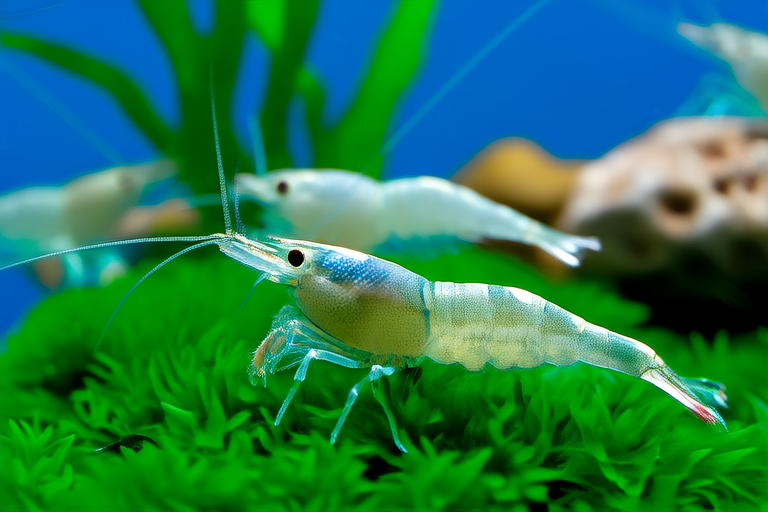How to Care for Coral Shrimp: A Beginner’s Guide
Welcome to your journey into the fascinating world of coral shrimp! These small, colorful crustaceans can add a delightful touch to your aquarium. As a beginner, understanding how to care for them properly is crucial for their health and happiness. This guide will walk you through setting up their ideal habitat, maintaining the right water conditions, feeding them correctly, and keeping an eye out for any potential health issues.
Understanding Coral Shrimp
Coral shrimp, also known as cleaner shrimp or pistol shrimp, come in various species, each with its unique appearance and behavior. They are typically found in tropical marine environments and are well-known for their role in cleaning other fish by removing parasites and dead skin. Their vibrant colors and active nature make them a popular choice among aquarium enthusiasts.
Setting Up the Ideal Habitat
The first step in caring for coral shrimp is creating a suitable environment that mimics their natural habitat. Here’s what you need:
Aquarium Size
Coral shrimp do best in a tank that’s at least 20 gallons. This provides ample space for them to explore and establish territories without feeling cramped. Larger tanks are even better, especially if you plan to add more shrimp or other compatible inhabitants.
Substrate and Decorations
Choose a fine-grained substrate like sand or crushed coral. Avoid sharp-edged materials that could injure your shrimp. Decorative elements such as rocks, caves, and live rock offer hiding spots and create a stimulating environment. Ensure there are plenty of crevices and nooks for the shrimp to feel secure.
Filtration and Water Flow
Install a high-quality filter to keep the water clean and oxygenated. A gentle water flow is preferred over strong currents, as it mimics their natural surroundings. You might want to include a powerhead or wavemaker to create a more dynamic water movement.
Maintaining Water Parameters
Consistent water quality is vital for the well-being of coral shrimp. Here’s how to maintain it:
Water Temperature
Keep the temperature between 74°F and 82°F (23°C to 28°C). Use a reliable heater and thermometer to monitor and adjust the temperature as needed.
Salinity and pH Levels
For most coral shrimp species, aim for a salinity (specific gravity) of 1.020 to 1.025 and a pH level of 8.1 to 8.4. Regular testing with appropriate kits will help you keep these levels stable.
Ammonia, Nitrite, and Nitrate Levels
Ensure ammonia and nitrite levels remain at zero, while nitrate levels should be kept below 20 ppm. Perform regular partial water changes—about 10% every week—to help maintain these parameters.
Dietary Needs
Feeding coral shrimp can be both fun and straightforward. They are omnivores, meaning they eat both plant and animal matter. Here’s how to meet their dietary needs:
Natural Diet
In the wild, coral shrimp consume algae, microorganisms, and small bits of food dropped by larger fish. In captivity, you can replicate this diet by offering a variety of foods:
- Algae Wafers: Provide algae wafers specifically designed for bottom-dwelling creatures.
- Flake Foods: Crushed flakes or pellets are suitable, especially those enriched with vitamins and minerals.
- Live or Frozen Foods: Offer brine shrimp, daphnia, or mysis shrimp as occasional treats.
Frequency and Portion Control
Feed your shrimp once or twice daily, offering only what they can consume within a few minutes. Overfeeding can lead to water quality issues and health problems.
Common Diseases and Health Issues
While coral shrimp are generally hardy, they can still face health challenges. Early detection and prompt action are key to ensuring their recovery.
Bacterial Infections
Symptoms include lethargy, loss of appetite, and white spots or patches on the body. Treat with an antibiotic specifically formulated for marine life under veterinary guidance.
Fungal Infections
Look for fluffy growths or cotton-like patches on the shrimp. Improve water quality and consider antifungal medications if necessary.
Predatory Behavior
Ensure your shrimp are not being targeted by aggressive tank mates. If you notice signs of distress or injuries, separate them or remove the aggressor.
Tips for Maintaining Healthy Coral Shrimp
Here are some additional tips to keep your coral shrimp thriving:
Introduce Gradually
When introducing new shrimp, acclimate them slowly to avoid shock. Float the bag in the tank for about 15 minutes, then gradually mix some tank water into the bag before releasing them.
Monitor Behavior
Observe your shrimp regularly to spot any unusual behaviors or physical changes early. Healthy shrimp are active and show vibrant colors.
Provide Hiding Spots
Ensure there are enough hiding spots for all your shrimp. Overcrowding can lead to stress and aggression.
Regular Maintenance
Perform routine maintenance tasks like cleaning filters, checking equipment, and testing water parameters. Consistency is key to maintaining a healthy environment.
Conclusion
Caring for coral shrimp can be incredibly rewarding, offering you the chance to witness their unique behaviors and contribute to their well-being. By following this beginner’s guide, you’ll be well-equipped to set up a thriving habitat and ensure your coral shrimp enjoy a long, healthy life. Remember, patience and attention to detail are your best allies in this endeavor. Happy shrimp-keeping!
